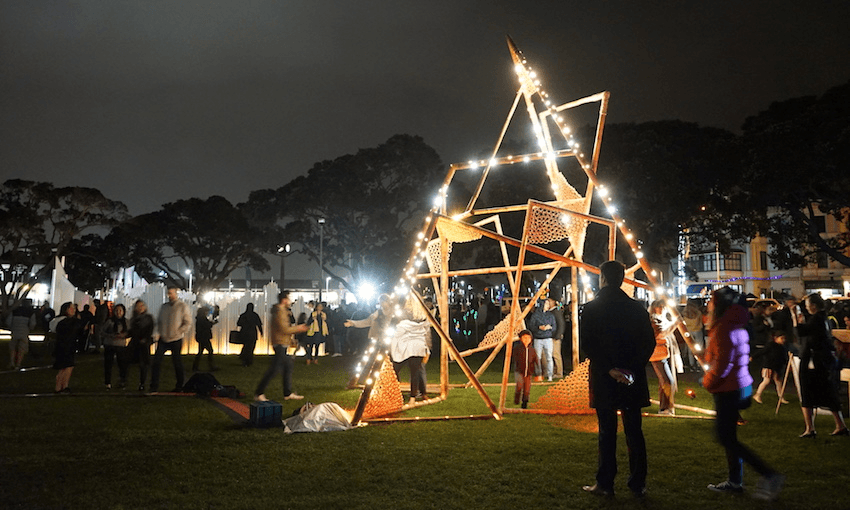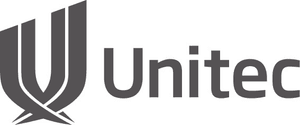In the depths of Unitec’s School of Architecture, teams of second-year students are preparing to put their first tangible projects in front of the public. Alex Braae went to meet one of the teams who will be transforming Devonport’s Windsor Reserve for GLOW@Artweek.
Stepping into the room where all the creativity is being done, Unitec architecture lecturer, Maurits Kelderman, warns us it’s going to be messy. Architects are always messy, he explains. He’s not wrong.
Students are clustered around desks, scattered with the debris of concepts. The walls are lined with diagrams and plans, buildings and spaces that so far exist only as visions. But what visions they are.
For the majority of these second-year students at Unitec’s School of Architecture, this will be their first project where they will build, exactly to scale, what they’ve planned and designed. Through the creation of installations for GLOW@Artweek, at Windsor Reserve in Devonport, they will learn skills that will last them for their whole professional careers.
Nine teams of students are taking part in the GLOW@Artweek project. They’ll build interactive light installations for the public to walk through and marvel at; they’ll be on show over the 18th and 19th of October. There are strict conditions on what and how the students can create as part of the project.
Their budget is zero. And the installations must be zero waste too, both in the construction and in the afterlife of the projects. These strict conditions are designed to teach the students about how to reduce waste without compromising quality. It’s an essential skill for future architects who will be working in an industry that is lagging behind in waste reduction.
The building industry in New Zealand is “inherently wasteful” says Kelderman, with far higher rates of material waste than comparable countries. So the project is about building awareness among students as they go through their studies and to maintain that awareness once they get into a professional field. “You know, how many tubes of silicon go into a building, and where do those tubes go? We can’t afford to be wasteful, we don’t have the resources,” says Kelderman.
It’s something that is a genuine concern for the students. As a younger generation they’ve grown up with a greater understanding of the huge cost of waste and the damage certain materials do to our world. Kaleb Smith, from the Kalypso team, says it’s about finding materials that can be used either without waste or can be recycled efficiently.
“Even now, with this kind of project we’re expected to look at energy-efficient materials, stuff that makes a building less of a burden on its surrounding environment,” he says. “So to do something like [the GLOW@Artweek], when we have to find our own materials, it makes us a bit more savvy in what we’re looking for.”
As can be gathered from the name, the GLOW@Artweek projects reference and play with light. For the students who do go on to design buildings, that too will be a consideration – how a building makes use of natural and artificial light, and how it makes those walking through it feel. This is about putting practical architecture into practice.
Kalypso’s design references both kaleidoscopes and playgrounds with walls of spinning noughts and crosses pieces. The team wants to create a feeling of childhood nostalgia when people walk through their installation surrounded by light dancing around them.
“When you envision it, you just imagine a little kid wanting to run through and spin everything,” says Shivani Kesha, one of the Kalypso team members. It’s art, but it’s meant to be interacted with. The attempt to create a sense of fun around that is entirely deliberate.
But that’s not so far away from architects putting serious thought into how they want people to interact with their buildings. As Kesha puts it, architecture is a logical kind of art. “It has to make sense for it to work.” The use of art as a teaching tool can be highly effective for translating ideas into workable, practical techniques and structures. Kelderman says it gives more freedom for students finding their way in the discipline than if they were designing something that needed to adhere to the building code.
“At the same time, they’ve got a responsibility to a public place, where they’re placing this installation, so safety and health in construction is a huge priority with this.”
At the moment, the project exists only as a small model, made of string, cardboard and Blu-tac. Kesha was the builder of the model, and modestly described the beautifully intricate creation as “really rough.”
“It’s a lot of planning. You spend a lot more time planning how the model will fit together than actually making it. Because if you get one measurement wrong, then the whole thing is going to be wrong,” she says of her process.
And when the students from Kalypso finally do get to see people interact and respond to their work, they’ll experience a feeling that even the most senior architect would never tire of – the thrill of a perfectly designed space, from the chaos of all the ideas that went into it.
“When I first started studying architecture, I wasn’t super passionate about it. But I get it now, you learn to understand and appreciate why architects are so interested in buildings,” says Kesha.
“You can be proud of something that you pin-up, but it’s never actually going to be built. But this is.”
And that is the power of the GLOW@Artweek project. It enables the students to learn valuable skills that are essential to their future careers as architects while creating a real tangible thing. They’re part of a team, they must meet deadlines, and they’re engaging with industry partners. The project allows them to understand the way design and its actual construction interact. And it’s teaching them to do it with the lightest impact on the environment.

